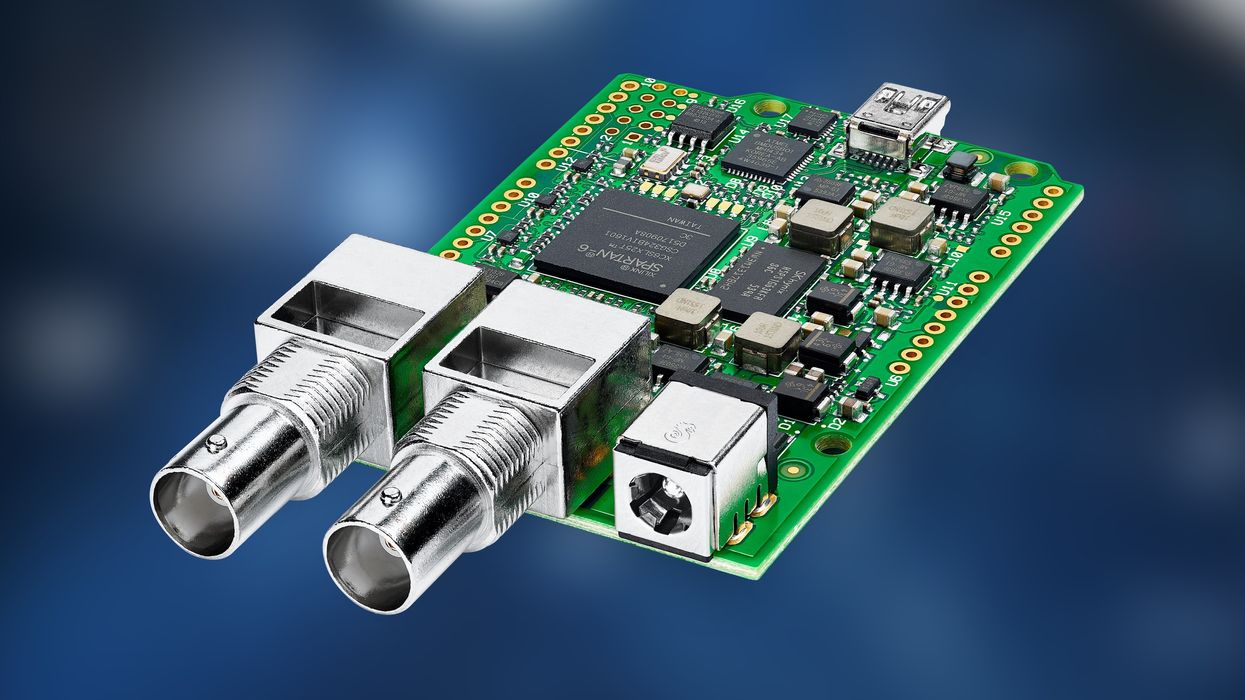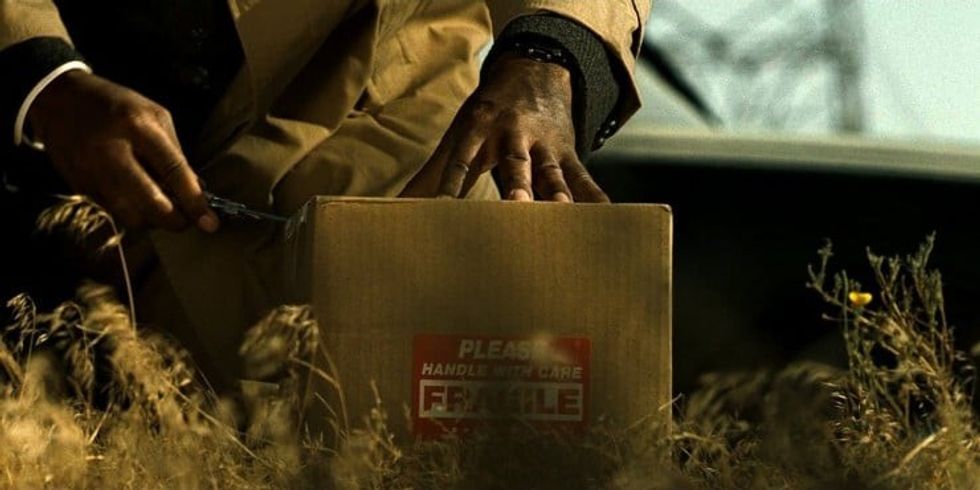Blackmagic Brings DIY Tech into Camera Control With New Arduino Shield 3G-SDI
Blackmagic Design's Arduino shield offers new flexibility in remote camera control using its open protocol.

First announced at NAB back in April, Australian company Blackmagic Designreleased their 3G-SDI Arduino Shield yesterday. While initially targeted at the broadcast market, its price point ($95!) and the DIY ethos of Arduino make it likely that indie filmmakers will find ways to adapt the tool to their needs.
Arduino, if you don’t know, is an open-source, flexible, hardware-focused rapid prototyping system. They are basically very small computers, designed to interact with the world around them through various I/O methods and simple to understand software code. This board is what is called a shield, meaning that it would need to be attached to an Arduino CPU board to function, which can be as cheap as $45. Arduino has a huge user community and lots of DIY applications, with still photographers already building a variety of tools, and it’ll be exciting to see that activity in the motion area as well.

What might you do with with a video shield for Arduino? To fully understand, you need to know a bit about the Blackmagic Control Protocol, which is a system for remote camera control that uses excess bandwidth in the SDI signal to send signals that remotely control a camera. So, if you have an SDI cable running to the camera, you can also control a bunch of other features of the camera remotely over the same cable.

Here's a list of controllable elements over SDI with Blackmagic Camera Control Protocol:
- Video
- Audio
- Talkback
- Tally
- Gain
- Detail
- Shutter
- Zoom
- Focus
- Iris
- Pedestal
- Color Balance
- Contrast
- Huge
- Saturation
Most of these are really for a broadcast environment, such as color balance control so that an engineer at a switchboard can balance all the cameras in a studio to match each other remotely. They're powerful, but not particularly useful outside a multi-cam stage.
If, however, you are working with a compatible camera (which are currently the Blackmagic Studio line or and URSA Mini camera, though it’s an open standard and other brands of camera might integrate it in the future), and a controllable lens (anything with an internal motor), you can now use this Arduino Shield to control the camera. Why is that cool? Arduino requires very little power, and is capable of remote control over Bluetooth and Wifi with some very inexpensive accessories.
For the indie filmmaker, the biggest possible plus is remote lens control. If you’ve ever built a DIY stabilizer or jib, you’ll soon realize that the biggest frustration is that there isn’t really a DIY wireless focus unit that will allow you to control the lens, and without wireless focus, it’s really hard to do those elaborate long takes and you built the stabilizer for, no matter how good you get with maintaining a level horizon through turns.
You should be able to create a wireless focus/iris/zoom control using this board, an Arduino CPU, and either your laptop or tablet with Bluetooth and Wifi, so you can have wireless FIZ for a few hundred dollars. Other applications could include an automated follow focus (by connecting with a powerful computer capable of sophisticated face recognition, for instance), or motion control of the lens for effects work. In combination with an accelerometer and other sensors stacked up on the camera, you could perhaps record camera and lens telemetries that would help with particularly complicated effects shots.

It'll also be exciting to see if the control is fine-grained enough to be used to control a 3D rig by stacking multiple shields together: if they can keep the shutters in-sync, low-cost stereo camera control (and camera matching) could be a great use-case.
This is one of the coolest things I've seen come out of a camera company in awhile. Building a new protocol for camera control and opening it up to the DIY community to build useful tools around it, it really shows a company that is dedicated to staying relevant for its user base of existing customers and pushing things forward.
Will it be as solid as a Bar-Tek or a Preston? Probably not. Will it get the job done for a tenth the cost? It just might.















